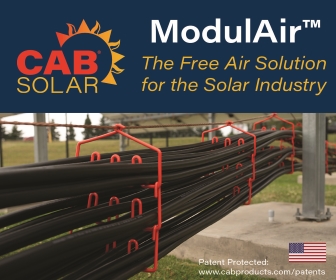Designing Ground Mount and Solar Carport Systems for Winter Conditions
Snow, ice, freezing temperatures-winter conditions can be a nuisance, certainly. But with careful planning and consideration, solar mounting structures can stay on top of their game even in harsh conditions. New England and Minnesota have high snow loads to account for in solar racking design, but neither let a little winter weather get in the way of being popular areas for solar installations. Whether you're interested in constructing a ground mount or carport structure in a winter weather region, you don't have to let snow and ice prohibit you from having an efficient solar system.
How Does Winter Weather Put PV Systems at Risk?
With both ground mount and carport solar structures, higher snow loads usually require more and heavier structural supports for the PV modules. Ground mount structures pose fewer dangers to individuals as they are usually in fields and away from human activity, but it's still necessary to consider how ice and snow loading can affect the productivity of the system.
Snow and ice shedding can be hazardous to the public or property underneath a solar carport. Increasing the tilt angle only adds to this potential hazard, as sheets of melting snow and ice can slide off the modules above. However, these risks and dangers can be minimized in the planning and design phases.
Preventing Snow and Ice Damage to Solar Mounting Systems
No one wants to see their solar PV system rendered useless by the effects of snow and ice. Thankfully, implementing proven winter condition design strategies for ground mount and solar canopy structures can prevent this from happening.
There are multiple design strategies for ground mount solar systems to prevent snow and ice damage. Typically, the height of the low edge of the modules (called ground clearance) is raised to allow for snow shedding off the modules and to avoid buildup on the lower modules during heavy snows. The tilt angle of the system is also commonly increased to aid in the shedding of snow, which results in better overall system production. However, it's important to remember that wind loads increase as the tilt increases, and this design strategy does require more space between rows.
With solar canopies, snow guards can be added to the structure to prevent sheets of snow from falling off the roof and onto persons and vehicles below. Water management can also help prevent icicles from forming on the carport. In some cases, the geometry of the structure can be modified to control where snow may accumulate and the direction water flows off the carport.
Best Practices for Installing Solar in Winter Months
As one of the top solar racking companies in the US, we've developed best practices to keep in mind when installing a solar mounting system in the winter months. With any solar PV system, construction and installation are a big part of the overall project. Cold temperatures, and snow/site clearing can impede progress on a site. Even the hardest working crews don't function as well in the cold, and snow cleanup can add extra costs in both time and labor.
Ideally, it's best to avoid winter installation, but when this isn't possible, planning ahead for winter conditions helps limit setbacks. A target schedule can help keep your solar mounting system project on track, but having a few flexible weeks built in sets realistic expectations for project completion while accounting for nature's schedule.
Pre-assembling some solar mounting components can save considerable time and money. Parts are assembled more quickly in the protection of our warehouses, especially during the winter months, and speeds-up installation on-site. At RBI Solar, we recognize the time and cost benefits of pre-assembly and offer this service year-round in our warehouses.
RBI Solar | www.rbisolar.com









.png?r=6102)


